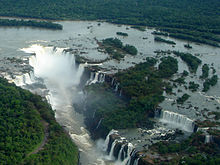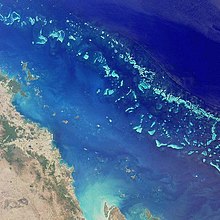Environmental protection is practiced for protecting the natural environment
on individual, organization controlled by governmental levels, for the
benefit of both the environment and humans. Due to the pressures of overconsumption, population and technology, the biophysical environment
is being degraded, sometimes permanently. This has been recognized, and
governments have begun placing restraints on activities that cause environmental degradation. Since the 1960s, activity of environmental movements has created awareness of the various environmental problems. There is no agreement on the extent of the environmental impact of human activity and even scientific dishonesty occurs, so protection measures are occasionally debated.Also government has banned plastics.
Approaches with regards to environmental protection
Voluntary environmental agreements
In industrial countries, voluntary environmental agreements are often provide a platform for companies to be recognized for moving beyond the minimum regulatory standards and thus support the development of best environmental practice.. For instance, in India, Environment Improvement Trust (EIT) has been working for environment & forest protection since 1998. A group of Green Volunteers get a goal of Green India Clean India concept. CA Gajendra Kumar Jain a Chartered Accountant, is the founder of Environment Improvement Trust in Sojat city a small village of State of Rajasthan in India In developing countries, such as throughout Latin America, these agreements are more commonly used to remedy significant levels of non-compliance with mandatory regulation. The challenges that exist with these agreements lie in establishing baseline data, targets, monitoring and reporting. Due to the difficulties inherent in evaluating effectiveness, their use is often questioned and, indeed, the whole environment may well be adversely affected as a result. The key advantage of their use in developing countries is that their use helps to build environmental management capacity.Ecosystems approach
An ecosystems approach to resource management and environmental protection aims to consider the complex interrelationships of an entire ecosystem in decision making rather than simply responding to specific issues and challenges. Ideally the decision-making processes under such an approach would be a collaborative approach to planning and decision making that involves a broad range of stakeholders across all relevant governmental departments, as well as representatives of industry, environmental groups and community. This approach ideally supports a better exchange of information, development of conflict-resolution strategies and improved regional conservation.Religions also play an important role in conservation of environment.Ref-Hadiya Habib (Role of religious education and different religions in conservation and maintenance of environment, www.oiirj.org)vol 07, July 2017, special issue.International environmental agreements
Kyoto Protocol Commitment map 2010
Many of the earth's resources are especially vulnerable because they are influenced by human impacts across many countries. As a result of this, many attempts are made by countries to develop agreements that are signed by multiple governments to prevent damage or manage the impacts of human activity on natural resources. This can include agreements that impact factors such as climate, oceans, rivers and air pollution. These international environmental agreements are sometimes legally binding documents that have legal implications when they are not followed and, at other times, are more agreements in principle or are for use as codes of conduct. These agreements have a long history with some multinational agreements being in place from as early as 1910 in Europe, America and Africa. Some of the most well-known international agreements include the Kyoto Protocol and others.
Government
Discussion concerning environmental protection often focuses on the role of government, legislation, and law enforcement. However, in its broadest sense, environmental protection may be seen to be the responsibility of all the people and not simply that of government. Decisions that impact the environment will ideally involve a broad range of stakeholders including industry, indigenous groups, environmental group and community representatives. Gradually, environmental decision-making processes are evolving to reflect this broad base of stakeholders and are becoming more collaborative in many countries.Many constitutions acknowledge the fundamental right to environmental protection and many international treaties acknowledge the right to live in a healthy environment. Also, many countries have organizations and agencies devoted to environmental protection. There are international environmental protection organizations, such as the United Nations Environment Programme.
Although environmental protection is not simply the responsibility of government agencies, most people view these agencies as being of prime importance in establishing and maintaining basic standards that protect both the environment and the people interacting with it.
Tanzania
Tanzania is recognised as having some of the greatest biodiversity of any African country. Almost 40% of the land has been established into a network of protected areas, including several national parks. The concerns for the natural environment include damage to ecosystems and loss of habitat resulting from population growth, expansion of subsistence agriculture, pollution, timber extraction and significant use of timber as fuel.
Zebras at the Serengeti savana plains in Tanzania
History of environmental protection
Environmental protection in Tanzania began during the German occupation of East Africa (1884-1919) — colonial conservation laws for the protection of game and forests were enacted, whereby restrictions were placed upon traditional indigenous activities such as hunting, firewood collecting and cattle grazing. In year 1948, Serengeti was officially established as the first national park for wild cats in East Africa. Since 1983, there has been a more broad-reaching effort to manage environmental issues at a national level, through the establishment of the National Environment Management Council (NEMC) and the development of an environmental act. In 1998 Environment Improvement Trust (EIT) start working for environment & forest protection in India from a small city Sojat. Founder of Environment Improvement Trust is CA Gajendra Kumar Jain working with volunteers.Government protection
Division of the biosphere is the main government body that oversees protection. It does this through the formulation of policy, coordinating and monitoring environmental issues, environmental planning and policy-oriented environmental research.The National Environment Management Council (NEMC) is an institution that was initiated when the National Environment Management Act was first introduced in year 1983. This council has the role to advise governments and the international community on a range of environmental issues. The NEMC the following purposes: provide technical advice; coordinate technical activities; develop enforcement guidelines and procedures; assess, monitor and evaluate activities that impact the environment; promote and assist environmental information and communication; and seek advancement of scientific knowledge.The National Environment Policy of 1997 acts as a framework for environmental decision making in Tanzania. The policy objectives are to achieve the following:
- Ensure sustainable and equitable use of resources without degrading the environment or risking health or safety.
- Prevent and control degradation of land, water, vegetation and air
- Conserve and enhance natural and man-made heritage, including biological diversity of unique ecosystems
- Improve condition and productivity of degraded areas
- Raise awareness and understanding of the link between environment and development
- Promote individual and community participation
- Promote international cooperation
China
The Longwanqun National Forest Park is a nationally protected nature area in Huinan County, Jilin, China
Formal environmental protection in China House was first stimulated by the 1972 United Nations Conference on the Human Environment held in Stockholm, Sweden. Following this, they began establishing environmental protection agencies and putting controls on some of its industrial waste. China was one of the first developing countries to implement a sustainable development strategy. In 1983 the State Council announced that environmental protection would be one of China's basic national policies and in 1984 the National Environmental Protection Agency (NEPA) was established. Following severe flooding of the Yangtze River basin in 1998, NEPA was upgraded to the State Environmental Protection Agency (SEPA) meaning that environmental protection was now being implemented at a ministerial level. In 2008, SEPA became known by its current name of Ministry of Environmental Protection of the People's Republic of China (MEP).
| Command-and-control | Economic incentives | Voluntary instruments | Public participation |
|---|---|---|---|
| Concentration-based pollution discharge controls | Pollution levy fee | Environmental labeling system | Clean-up campaign |
| Mass-based controls on total provincial discharge | Non-compliance fines | ISO 14000 system | Environmental awareness campaign |
| Environmental impact assessments (EIA) | Discharge permit system | Cleaner production | Air pollution index |
| Three synchronization program | Sulfur emission fee | NGOs | Water quality disclosure |
| Deadline transmission trading | Administrative permission hearing | ||
| Centralized pollution control | Subsidies for energy saving products | ||
| Two compliance policy | Regulation on refuse credit to high-polluting firms | ||
| Environmental compensation fee |
Environmental pollution and ecological degradation has resulted in economic losses for China. In 2005, economic losses (mainly from air pollution) were calculated at 7.7% of China's GDP. This grew to 10.3% by 2002 and the economic loss from water pollution (6.1%) began to exceed that caused by air pollution. China has been one of the top performing countries in terms of GDP growth (9.64% in the past ten years). However, the high economic growth has put immense pressure on its environment and the environmental challenges that China faces are greater than most countries. In 2010 China was ranked 121st out of 163 countries on the Environmental Performance Index.
China has taken initiatives to increase its protection of the environment and combat environmental degradation:
- China's investment in renewable energy grew 18% in 2007 to $15.6 billion, accounting for ~10% of the global investment in this area;
- In 2008, spending on the environment was 1.49% of GDP, up 3.4 times from 2000;
- The discharge of CO (carbon monoxide) and SO2 (sulfur dioxide) decreased by 6.61% and 8.95% in 2008 compared with that in 2005;
- China's protected nature reserves have increased substantially. In 1978 there were only 34 compared with 2,538 in 2010. The protected nature reserve system now occupies 15.5% of the country; this is higher than the world average.
Quote from Shengxian Zhou, head of MEP (2009): "Good economic policy is good environmental policy and the nature of environmental problem is the economic structure, production form and develop model."
European Union
Environmental protection has become an important task for the institutions of the European Community after the Maastricht Treaty for the European Union ratification by all the Member States. The EU is already very active in the field of environmental policy with important directives like those on environmental impact assessment and on the access to environmental information for citizens in the Member States.Russia
In Russia, environmental protection is considered an integral part of national safety. There is an authorized state body - the Federal Ministry of Natural Resources and Ecology. However, there are a lot of environmental problems.Latin America
Top 5 Countries by biological diversity
The United Nations Environment Programme (UNEP) has identified 17 megadiverse countries. The list includes six Latin American countries: Brazil, Colombia, Ecuador, Mexico, Peru and Venezuela. Mexico and Brazil stand out among the rest because they have the largest area, population and number of species. These countries represent a major concern for environmental protection because they have high rates of deforestation, ecosystems loss, pollution, and population growth.
Brazil
Panorama of the Iguazu falls in Brazil
Brazil has the largest amount of the world's tropical forests, 4,105,401 km2 (48.1% of Brazil), concentrated in the Amazon region. Brazil is home to vast biological diversity, first among the megadiverse countries of the world, having between 15%-20% of the 1.5 million globally described species.
The organization in charge of environment protection is the Brazilian Ministry of the Environment (in Portuguese: Ministério do Meio Ambiente, MMA). It was first created in year 1973 with the name Special Secretariat for the Environment (Secretaria Especial de Meio Ambiente), changing names several times, and adopting the final name in year 1999. The Ministry is responsible for addressing the following issues:
- A national policy for the environment and for water resources;
- A policy for the preservation, conservation and sustainable use of ecosystems, biodiversity and forests;
- Proposing strategies, mechanisms, economic and social instruments for improving environmental quality, and sustainable use of natural resources;
- Policies for integrating production and the environment;
- Environmental policies and programs for the Legal Amazon;
- Ecological and economic territorial zoning.
Mexico
With over 200,000 different species, Mexico is home to 10–12% of the world's biodiversity, ranking first in reptile biodiversity and second in mammals—one estimate indicates that over 50% of all animal and plant species live in Mexico.The history of environmental policy in Mexico started in the 1940s with the enactment of the Law of Conservation of Soil and Water (in Spanish: Ley de Conservación de Suelo y Agua). Three decades later, at the beginning of the 1970s, the Law to Prevent and Control Environmental Pollution was created (Ley para Prevenir y Controlar la Contaminación Ambiental).
In year 1972 was the first direct response from the federal government to address eminent health effects from environmental issues. It established the administrative organization of the Secretariat for the Improvement of the Environment (Subsecretaría para el Mejoramiento del Ambiente) in the Department of Health and Welfare.
The axolotl is an endemic species from the central part of Mexico
The Secretariat of Environment and Natural Resources (Secretaría del Medio Ambiente y Recursos Naturales, SEMARNAT) is Mexico's environment ministry. The Ministry is responsible for addressing the following issues:
- Promote the protection, restoration and conservation of ecosystems, natural resources, goods and environmental services, and to facilitate their use and sustainable development.
- Develop and implement a national policy on natural resources
- Promote environmental management within the national territory, in coordination with all levels of government and the private sector.
- Evaluate and provide determination to the environmental impact statements for development projects and prevention of ecological damage
- Implement national policies on climate change and protection of the ozone layer.
- Direct work and studies on national meteorological, climatological, hydrological, and geohydrological systems, and participate in international conventions on these subjects.
- Regulate and monitor the conservation of waterways
Oceania
Australia
The Great Barrier Reef in Australia is the largest barrier reef in the world
In 2008, there was 98,487,116 ha of terrestrial protected area, covering 12.8% of the land area of Australia. The 2002 figures of 10.1% of terrestrial area and 64,615,554 ha of protected marine area were found to poorly represent about half of Australia's 85 bioregions.
Environmental protection in Australia could be seen as starting with the formation of the first National Park, Royal National Park, in 1879. More progressive environmental protection had it start in the 1960s and 1970s with major international programs such as the United Nations Conference on the Human Environment in 1972, the Environment Committee of the OECD in 1970, and the United Nations Environment Programme of 1972. These events laid the foundations by increasing public awareness and support for regulation. State environmental legislation was irregular and deficient until the Australian Environment Council (AEC) and Council of Nature Conservation Ministers (CONCOM) were established in 1972 and 1974, creating a forum to assist in coordinating environmental and conservation policies between states and neighbouring countries. These councils have since been replaced by the Australian and New Zealand Environment and Conservation Council (ANZECC) in 1991 and finally the Environment Protection and Heritage Council (EPHC) in 2001.
At a national level, the Environment Protection and Biodiversity Conservation Act 1999 is the primary environmental protection legislation for the Commonwealth of Australia. It concerns matters of national and international environmental significance regarding flora, fauna, ecological communities and cultural heritage. It also has jurisdiction over any activity conducted by the Commonwealth, or affecting it, that has significant environmental impact. The act covers eight main areas:
- National Heritage Sites
- World Heritage Sites
- RAMSAR wetlands
- Nationally endangered or threatened species and ecological communities
- Nuclear activities and actions
- Great Barrier Reef Marine Park
- Migratory species
- Commonwealth Marine areas
At a state level, the bulk of environmental protection issues are left to the responsibility of the state or territory. Each state in Australia has its own environmental protection legislation and corresponding agencies. Their jurisdiction is similar and covers point-source pollution, such as from industry or commercial activities, land/water use, and waste management. Most protected lands are managed by states and territories with state legislative acts creating different degrees and definitions of protected areas such as wilderness, national land and marine parks, state forests, and conservation areas. States also create regulation to limit and provide general protection from air, water, and sound pollution.
At a local level, each city or regional council has responsibility over issues not covered by state or national legislation. This includes non-point source, or diffuse pollution, such as sediment pollution from construction sites.
Australia ranks second place on the UN 2010 Human Development Index and one of the lowest debt to GDP ratios of the developed economies. This could be seen as coming at the cost of the environment, with Australia being the world leader in coal exportation and species extinctions. Some have been motivated to proclaim it is Australia's responsibility to set the example of environmental reform for the rest of the world to follow.
New Zealand
At a national level, the Ministry for the Environment is responsible for environmental policy and the Department of Conservation addresses conservation issues. At a regional level the regional councils administer the legislation and address regional environmental issues.Switzerland
The environmental protection in Switzerland is mainly based on the measures to be taken against global warming. The pollution in Switzerland is mainly the pollution caused by vehicles and the litteration by tourists.United States
Yosemite National Park in California. One of the first protected areas in the United States
Since 1969, the United States Environmental Protection Agency (EPA) has been working to protect the environment and human health. All U.S. states have their own state departments of environmental protection.
The EPA has drafted "Seven Priorities for EPA's Future", which are:
- "Taking Action on Climate Change"
- "Improving Air Quality"
- "Assuring the Safety of Chemicals"
- "Cleaning Up Our Communities"
- "Protecting America's Waters"
- "Expanding the Conversation on Environmentalism and Working for Environmental Justice"
- "Building Strong State and Tribal Partnerships"







